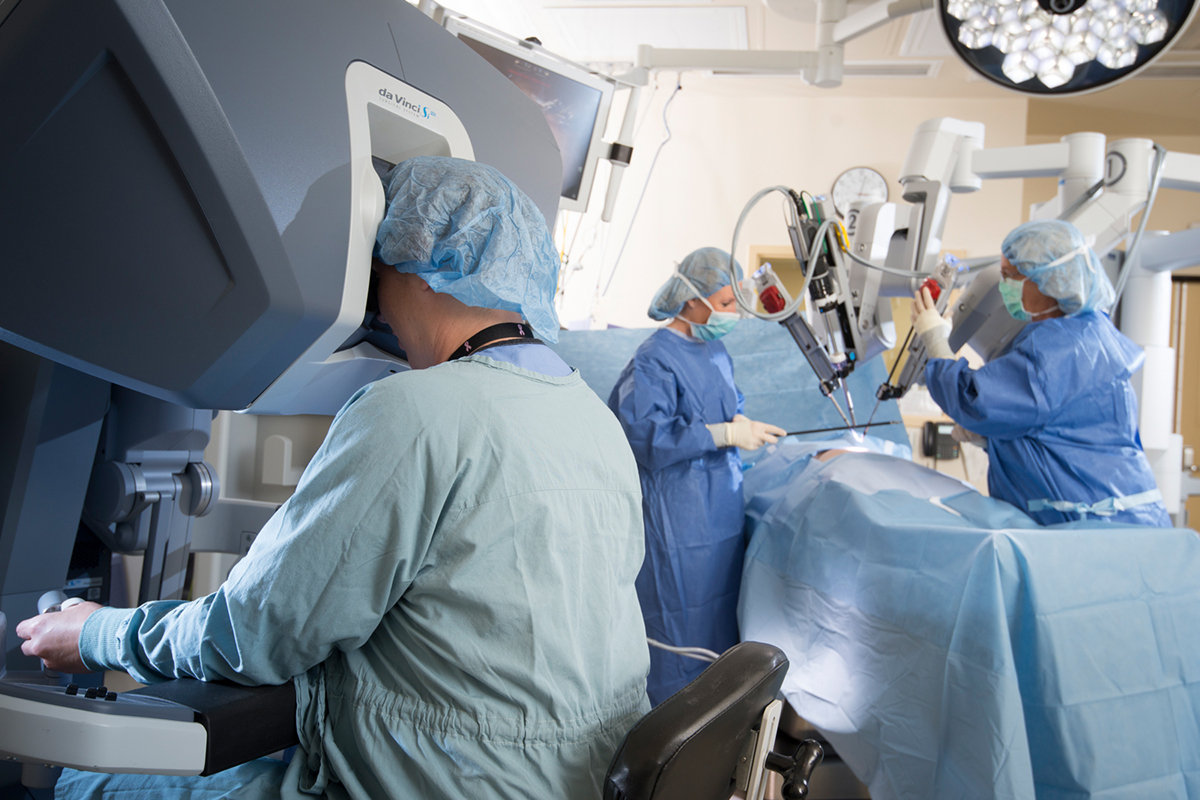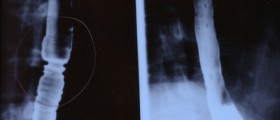
Esophageal cancer and robotic surgery
Many type of cancer of the esophagus exist but two types are seen in almost all patients. The names of these two types are squamous cell carcinoma and adenocarcinoma. Squamous cell carcinoma can be seen all over the esophagus but it is mainly seen in the upper and middle part of the organ. This type of cancer of the esophagus is the type that is most seen all over the world. However, in the United States adenocarcinoma is the most often diagnosed type of esophageal cancer. This type forms in the glandural tissue and it is usually located in the lower region of the organ, near to the stomach. A majority of adenocarcinomas are connected with Barrett syndrome. The researchers have discovered that if a person has Barrett syndrome, he or she has 30 or even 40 times more chance of developing adenocarcinoma. Every person diagnosed with Barrett syndrome needs to be monitored closely in order for the cancer to be discovered at the first sign. However, it does not necessarily mean that a person will develop esophageal cancer just because he or she is diagnosed with this syndrome.The treatment of every type of cancer depends on the stage at which it was diagnosed. More treatment options are available and there are more chances of the treatment to successful if the cancer was diagnosed in the early stages. However, the bad thing about cancer of the esophagus is that it is almost never diagnosed in the early stages. In most patients the cancer has progressed quite a lot by the time it was diagnosed.
A surgical procedure that removes the entire esophagus is known as esophagectomy. Along with the organ, the lymph nodes are removed as well. The exact stage of the cancer will determine whether the entire esophagus needs to be removed or just a portion. The remaining part of the esophagus is then re-connected to the stomach. If too much of the organ is removed, the stomach is pulled up. In situations where the cancer is near the stomach, a part of the stomach will be removed as well. Even if the surgery cannot cure the disease, it is advised for some in order to reduce the symptoms like difficulty with swallowing. Two types of esophagectomy are available. The first one is called open esophagectomy and here the esophagus is removed through an incision either in the chest or in the abdomen. The second type is named minimally invasive esophagectomy and it includes the making of several tinny incisions. Endoscopic instruments and video equipment are used in this procedure. A successful surgery allows the patient to leave the hospital sooner and to recover faster. This procedure is used more often than open esophagectomy and especially in situation where the cancer is a small one.Robotic esophagectomy is similar to minimally invasive esophagectomy as it includes the making of small incisions and the use of a video camera. In addition to the camera, robotic arms are inserted through the holes in order for a 3-D magnified view of the surgical site to be established. This procedure is used when the cancer is small.
In the first two years of the robotic program, 18 men and 9 women underwent the procedure, all of them older than 60 years of age. Only 4 of the patients did not have preoperative neoadjuvant therapy. In all the patients the tumor was in the distal esophagus and the surgery averagely lasted for almost 9 hours. Not even one of the patients experienced anastomotic leaks and the most serious complication was pneumonia. No deaths inside the hospitals were recorded and the survival rate for a period of 18 months was 97%.Stages of esophageal cancer and survival rate
The staging of the cancer of the esophagus changed when the last edition of the UICC/AJCC manual was published in 2009. The new classification is a TNM classification. The first stage is a Tis stage and the carcinoma is in situ at that stage. From T1 to T4b the cancer is in Lamina proporia, Submucosa, Myscularis propria, Adventitia, Adjacent structures, Pleuria, diaphragm and other adjacent structures. At N0, no regional lymph node experienced metastasis. The metastasis ranges from 1 to more than 6 lymph nodes in stages N1, N2 and N3. The final stage is M1 and it is named distant metastasis.
















Your thoughts on this
Loading...